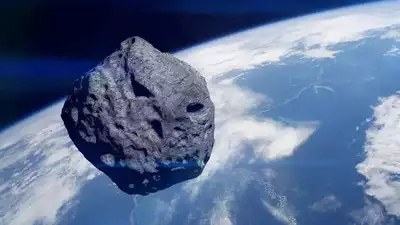- News
- Science News
- ‘City killer’ asteroid 2024 YR4 is no longer a threat to Earth, but it could collide with moon instead
‘City killer’ asteroid 2024 YR4 is no longer a threat to Earth, but it could collide with moon instead
Asteroid 2024 YR4, initially feared to be a significant threat to Earth, now poses near-zero risk to our planet, thanks to ongoing observations by NASA and the James Webb Space Telescope. However, there's a 2% chance it could collide with the Moon in 2032, reminding scientists to keep monitoring near-Earth objects closely.
The asteroid 2024 YR4, once dreaded to be a "city-killer," is not now regarded as a major menace to Earth anymore. Although the possibility of it colliding with our planet is reduced significantly now, recent findings indicate a probability of a meager chance to collide with the Moon in the near future.
2024 YR4, which was found in December of 2024, was first a cause of concern because it was quite large, almost the size of a football field. When it was found, NASA's Center for Near-Earth Object Studies placed a 3% chance that the asteroid might hit Earth in 2032. This probability was soon scaled down to much lower odds, 0.28%, in a matter of weeks after detection.
Asteroid 2024 YR4's growing threat to the Moon
In spite of the reduced chances of an Earth impact, asteroid 2024 YR4 has created fresh fears of a collision with the Moon. The asteroid, according to astronomer Andrew Rivkin, as seen by New Scientist, now has a 2% chance of hitting the Moon on December 22, 2032. This is marginally greater than the 1.7% chance previously estimated by NASA in February.
James Webb Space Telescope confirms near-zero threat from asteroid 2024 YR4
As research and observation went on, the James Webb Space Telescope was instrumental in further tracking the asteroid. In late March, observations by the Webb telescope assured that the asteroid 2024 YR4 now poses a near-zero threat to Earth. The information gathered by this powerful observatory further reinforced the conclusion that the asteroid will not impact our planet in the near future.
The James Webb Space Telescope will be observing 2024 YR4 once more in May 2025. The capabilities of the telescope are unmatched, and it can observe faint and distant objects within the universe. It gives wonderful data to NASA and foreign space agencies. This constant observation will still sharpen our knowledge of the course of the asteroid, especially as it travels toward the outer solar system.
Impacts of asteroid on the Moon
Although the possibility of collision with Earth is low, the impact on the
Moon is not yet known. NASA suggests that asteroid impacts have, over billions of years, sculpted the surface of the Moon, producing craters and leaving an everlasting impression on the landscape. The American Museum of Natural History is adamant that impacts like these occurred far more commonly in the far past but now become very rare with time and, therefore, give rise to a "relatively peaceful present."
The specific impact of an encounter with an asteroid of 2024 YR4's diameter is unknown. Earlier assessments have indicated that an impact on Earth would have "truly catastrophic" implications, though the impact would be localized, not inducing global climate shifts. Still, it would be an event of unimaginable scale, one that would bring widespread devastation in the local region of impact.
Ongoing monitoring of asteroid 2024 YR4
Though tiny risks are present, researchers and space agencies are still tracking the path of 2024 YR4 closely. Though the chances of an impact on Earth have been virtually ruled out, the remote possibility of a collision with the Moon is a reminder of the need for continued caution in observing and monitoring near-Earth objects. As technology continues to evolve and we learn more about these cosmic dangers, the hope is that we can guarantee a peaceful future, untroubled by devastating asteroid impacts.
Also Read | Mammals’ evolution to terrestrial life happened just before the asteroid that ended the dinosaurs - study reveals

About the Author
TOI Science DeskEnd of Article
Follow Us On Social Media

